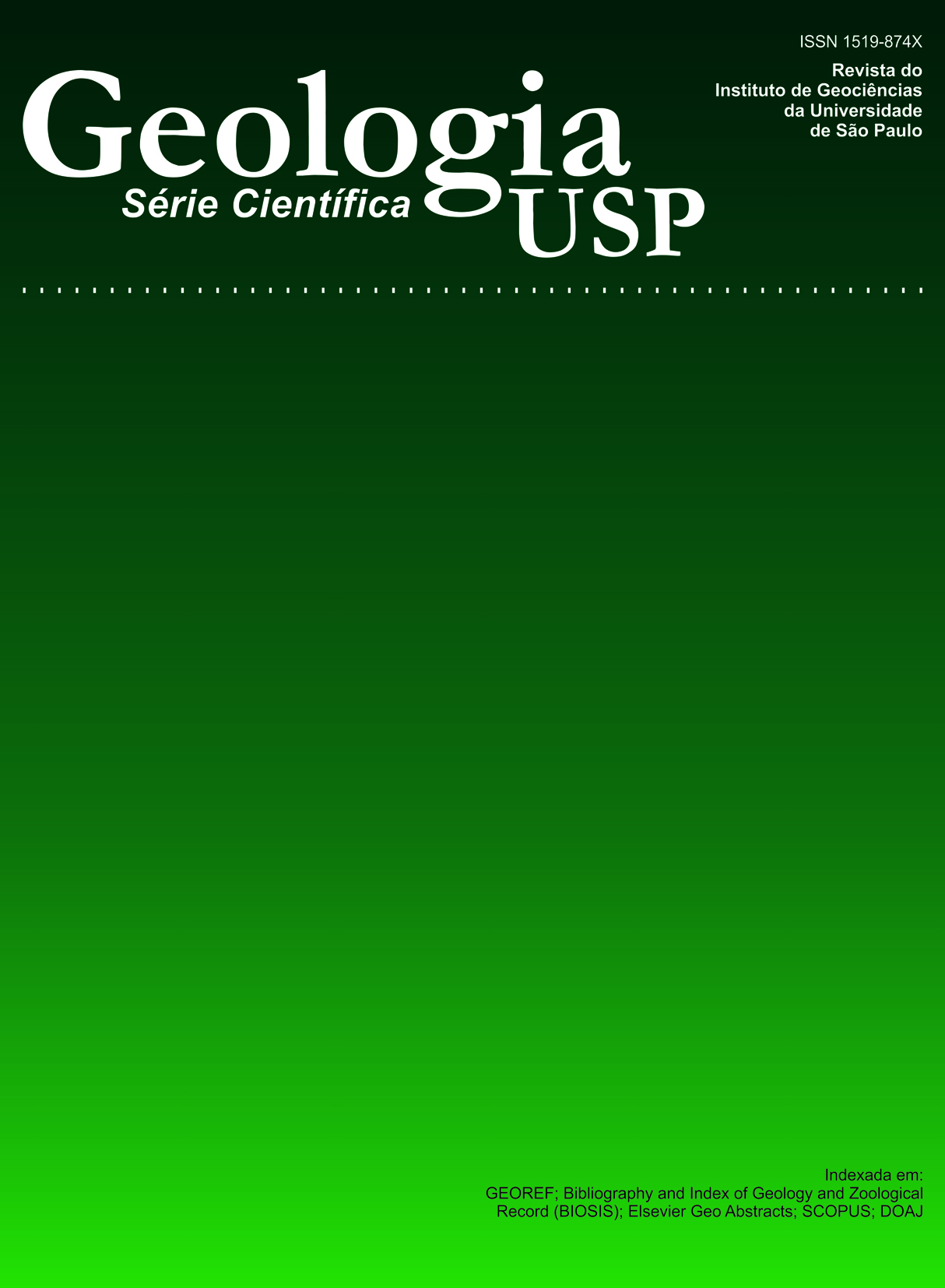Structural analysis of the Rio Pardo Group: southeast of Bahia state
DOI:
https://doi.org/10.5327/Z1519-874X2011000300002Keywords:
Rio Pardo Group, Araçuaí belt, Structural analysis, Tectonic Vergence, Craton-Fold belt transitionAbstract
The Meso- to Neoproterozoic Rio Pardo Group is located in the southeastern region of the Bahia State and consists of low-grade metasedimentary rocks deposited on Paleoproterozoic to Archean basement. From the base to the top, the metasedimentary rocks are grouped into the following sequences: Panelinha Formation consisting of coarse-grained immature clastics; the overlying Itaimbé Subgroup which is made up of the Camacã Formation (metapelites with local carbonates), the Água Preta Formation (fine-grained metapsamites and local carbonate lenses), Serra do Paraíso Formation (metacarbonates and quartzites) and the Santa Maria Eterna Formation (metaconglomerates and metacarbonates). The Salobro Formation was deposited unconformably on this sequence and consists of coarse-grained immature and local finegrained clastic rocks. The Rio Pardo Group was affected by three successive folding events, which were recorded in two litho-structural units. The litho-structural unit 1 is located in the northeastern part of the basin, and the litho-structural unit 2, in the southwestern part of the basin. These units are separated by the Rio Pardo-Água Preta inverse fault, trending NW-SE and dipping SW. The first unit is autochthonous and monophasic and displays open folds and slaty cleavage, changing gradually towards southwest into large overturned folds with axial plane schistosity. The second unit is polyphasic and shows large folds with NE vergence. A third folding is represented by folds and foliations present at the western margin of the basin. The NE vergence of the Rio Pardo Group can be explained by changes in the deformation regime and in the direction of the principal axis of deformation in the north sector of the Araçuaí belt during the Brasiliano collision orogen. The tectonic transport to the north could be the cause of deformation of the Rio Pardo Group.Downloads
Download data is not yet available.
Downloads
Published
2011-12-01
Issue
Section
Articles
License
Authors who publish in this journal shall comply with the following terms:
- Authors keep their copyright and grant to Geologia USP: Série Científica the right of first publication, with the paper under the Creative Commons BY-NC-SA license (summary of the license: https://creativecommons.org/licenses/by-nc-sa/4.0 | full text of the license: https://creativecommons.org/licenses/by-nc-sa/4.0/legalcode) that allows the non-commercial sharing of the paper and granting the proper copyrights of the first publication in this journal.
- Authors are authorized to take additional contracts separately, for non-exclusive distribution of the version of the paper published in this journal (publish in institutional repository or as a book chapter), granting the proper copyrights of first publication in this journal.
- Authors are allowed and encouraged to publish and distribute their paper online (in institutional repositories or their personal page) at any point before or during the editorial process, since this can generate productive changes as well as increase the impact and citation of the published paper (See The effect of Open Access and downloads on citation impact).
How to Cite
Egydio-Silva, M., Karmann, I., & Trompette, R. (2011). Structural analysis of the Rio Pardo Group: southeast of Bahia state . Geologia USP. Série Científica, 11(3), 23-41. https://doi.org/10.5327/Z1519-874X2011000300002





